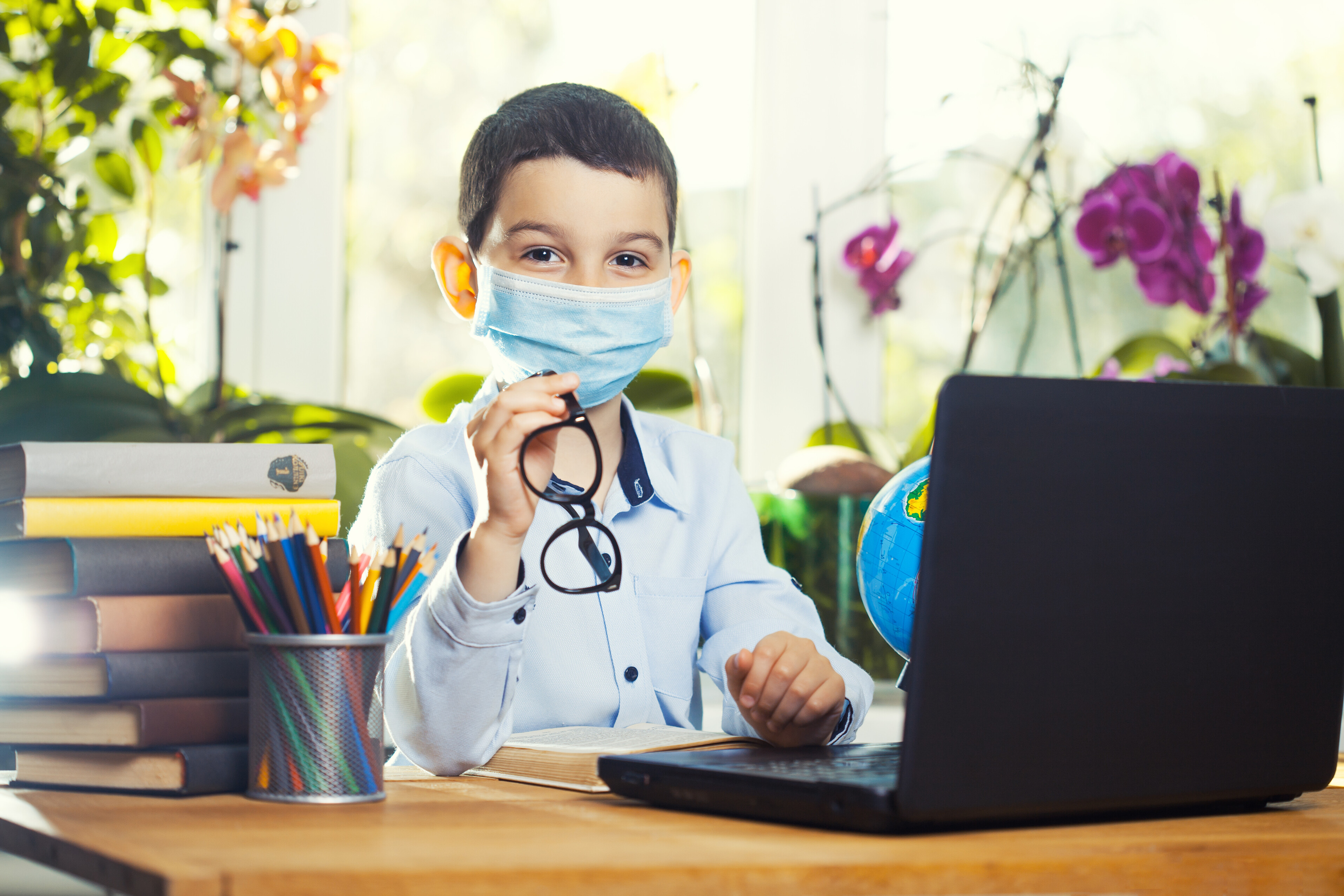
As communities try to balance the urgent need to bring students back to classrooms while also preventing the spread of coronavirus, Summit Health's Director of Infection Prevention Dr. Dan Hart offers some practical advice for two possible scenarios; classroom and virtual learning. "Being proactive and involved is necessary now more than ever," says Dr. Hart. "We need buy-in from everyone, and it's a matter of working together. Parents should be aware of their school’s policies to ensure everyone in the family stays safe."
CLASSROOM LEARNING
“If schools open for in-person learning, the threat of transmission that leads to community spread should be mitigated as much as possible,” Dr. Hart notes. Try to keep the following in mind:
Guidelines
Carefully read all school guidelines and policies ahead of time. Follow all protocols, including temperature checks, self-symptom monitoring, and providing proof of flu vaccination if required by your child’s school.
Transportation
- If your child takes the bus, follow safety protocols to reduce risk
- If you need to carpool, try to do so with the same families, limit the number of children in the car, and wear masks or face coverings
- Before and after transport, wipe down car handles, seats, and other parts of the car with disinfectant
Masks
- Before school reopens, consider having your child test out wearing a mask to see how long he or she can tolerate doing so
- Find a washable, comfortable brand of mask, as well as disposable ones. Don't depend on the school district to supply them
- Rotate several masks to allow time for washing, and ensure a clean mask is worn every day
- Keep extras on hand, since masks can get lost
- Avoid touching the part of the mask you breathe through; use the straps or ear loops to put on and remove a mask
For more information and guidance on children and masks, read our article CHILDREN AND MASKS WHAT PARENTS SHOULD KNOW.
Hand Washing
- Teach and encourage proper handwashing at home so students know how to do it at school
- Keep portable hand sanitizers and wipes on hand
- Clean your hands before and after eating, using the bathroom, touching your mask, and touching potentially contaminated surfaces
After School/Extracurricular Activities
For students who engage in sports or other contact activities:
- Provide disinfectant wipes and a large plastic bag to seal items like cleats and gloves
- Wipe down and leave larger items in trunks of cars overnight
- Wipe down backpacks and any school materials every day
Social Distancing
- Consider isolating from elderly and immunocompromised adults for as long as school is in session
- If unable to socially distance from elderly and the immunocompromised, practice mask wearing when in close contact
VIRTUAL LEARNING
A virtual or at-home learning environment can still include many of the supports that a typical classroom provides. In addition to following the curriculum, promoting a balance of physical and emotional health and wellness is also key. It’s important to check in with how children are feeling physically and emotionally throughout the day. Make sure they are fueling their bodies with good foods and are balancing their daily education with physical activity and play. Additionally, keep the following in mind:
A Reliable Routine
Routines are important for everyone, but especially kids. Ensure your child wakes up at the same time, gets dressed, and eats breakfast every morning, as if they were going to school.
Physical Activity
It's especially easy for online students to be sedentary. Just 30 minutes of moderate-to-intense aerobic exercise each day (spread throughout the day) can boost kids' focus and mood. If your child gets more restless as the day goes on, take movement breaks to burn off extra energy. And, ensure they stay hydrated.
Emotional Health
Check in on the emotional well-being of your child and create supports for emotional regulation and self-management. Construct separate spaces for children to practice mindfulness, to create, or to reflect in order to best manage impulses and navigate feelings as they arise. Also try to engage in conversations around their feelings.
Technology
Online students may be at increased risk for technology-induced health problems, including ailments associated with intensive seated screen time and extended computer use, including vision problems, headaches, and musculoskeletal problems. Create a comfortable workspace with an ergonomically correct chair. Take quick health breaks every 30 minutes that include stretching the neck, back, legs, shoulders, ankles and wrists. And, help them get adequate sleep by turning off all screens at least one hour before bedtime.
General Health Maintenance:
- Whether learning takes place in the classroom or virtually, ensure your children are feeling energized, supported, and ready for what’s ahead
- Maintain a vaccination schedule and ensure that you and your children are up to date on all recommended immunizations
- Follow the mask, handwashing, cleaning, and social distancing guidelines during school and social activities
Daniel Hart, MD specializes in infectious diseases, with a particular interest in HIV, viral hepatitis, and immunocompromised patients with infections. Dr. Hart also served as an Assistant Professor of Medicine at Rutgers Robert Wood Johnson Medical School, where he helped train the next generation of infectious disease physicians in his role as Director of the Infectious Diseases Fellowship Program.
